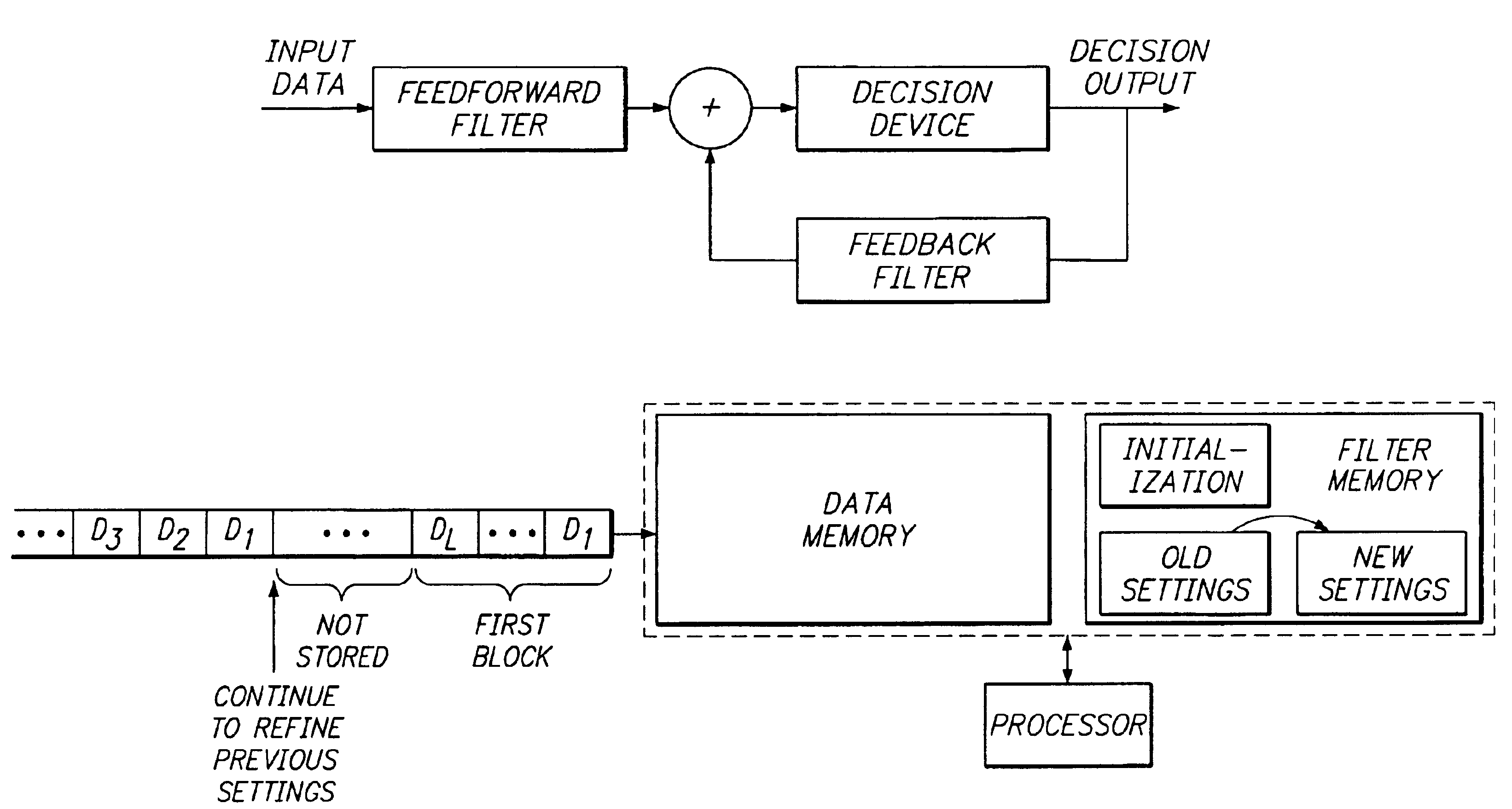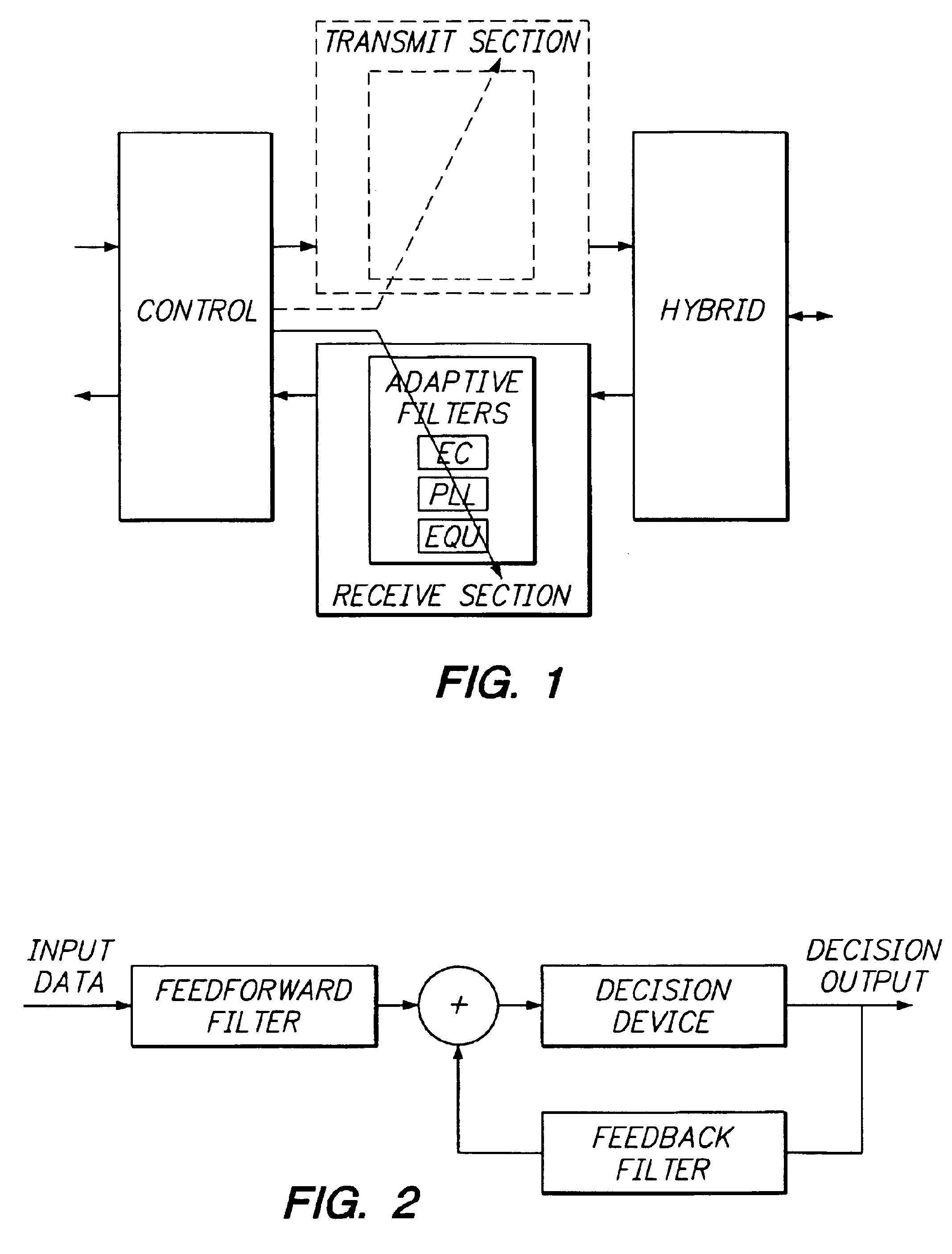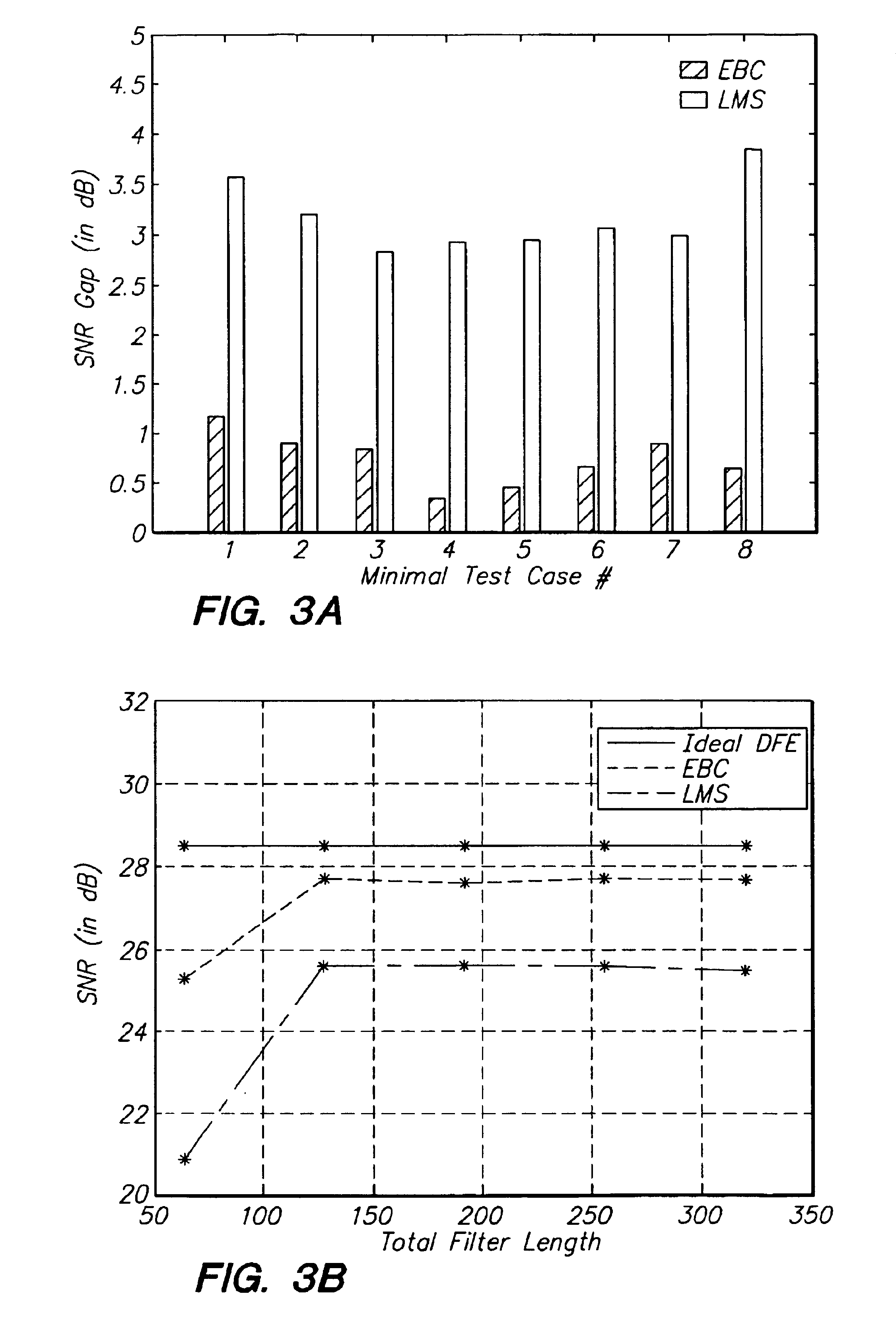Relaxed, more optimum training for modems and the like
a modem and optimum training technology, applied in the field of filter adaptation, can solve the problems of high computational burden on a typical processor (say, an x mips processor), adversely affecting power consumption, and may not be cost effective, and achieve the effect of improving the performance of a wireline modem, reducing the noise floor, and improving the noise margin
- Summary
- Abstract
- Description
- Claims
- Application Information
AI Technical Summary
Benefits of technology
Problems solved by technology
Method used
Image
Examples
Embodiment Construction
[0024]Referring to FIG. 1, a block diagram is shown illustrating portions of a wireline communications transceiver with which the present invention may be used. The wireline communications transceiver includes a control section, a transmit section, a receive section, and a hybrid section. Within the transceiver, particularly the receive section, may be various subsystems that require training by the control section, for example, a PLL (which may be of digital implementation), an echo canceller and an adaptive equalizer. The training of these subsystems is an interdependent process. For example, some initial training of the PLL may be required prior to any other training. This initial training, however, may not achieve as good results as may be obtained following some training of one or more of the other subsystems, i.e., the echo canceller and adaptive equalizer. As described hereinafter, the present training methods allow for coordinated, interdependent training of multiple sub-sys...
PUM
 Login to View More
Login to View More Abstract
Description
Claims
Application Information
 Login to View More
Login to View More - Generate Ideas
- Intellectual Property
- Life Sciences
- Materials
- Tech Scout
- Unparalleled Data Quality
- Higher Quality Content
- 60% Fewer Hallucinations
Browse by: Latest US Patents, China's latest patents, Technical Efficacy Thesaurus, Application Domain, Technology Topic, Popular Technical Reports.
© 2025 PatSnap. All rights reserved.Legal|Privacy policy|Modern Slavery Act Transparency Statement|Sitemap|About US| Contact US: help@patsnap.com



